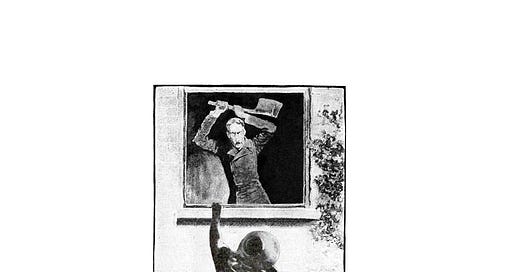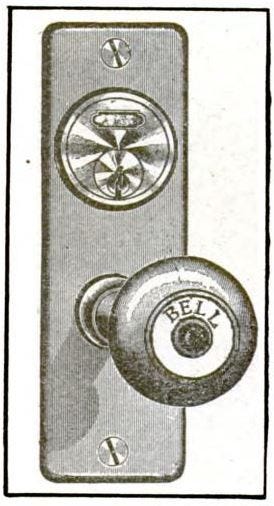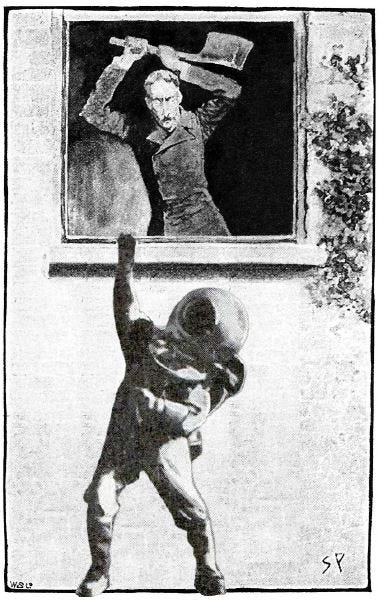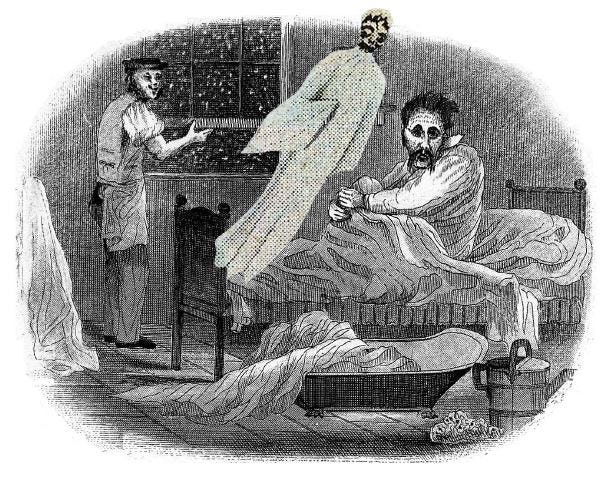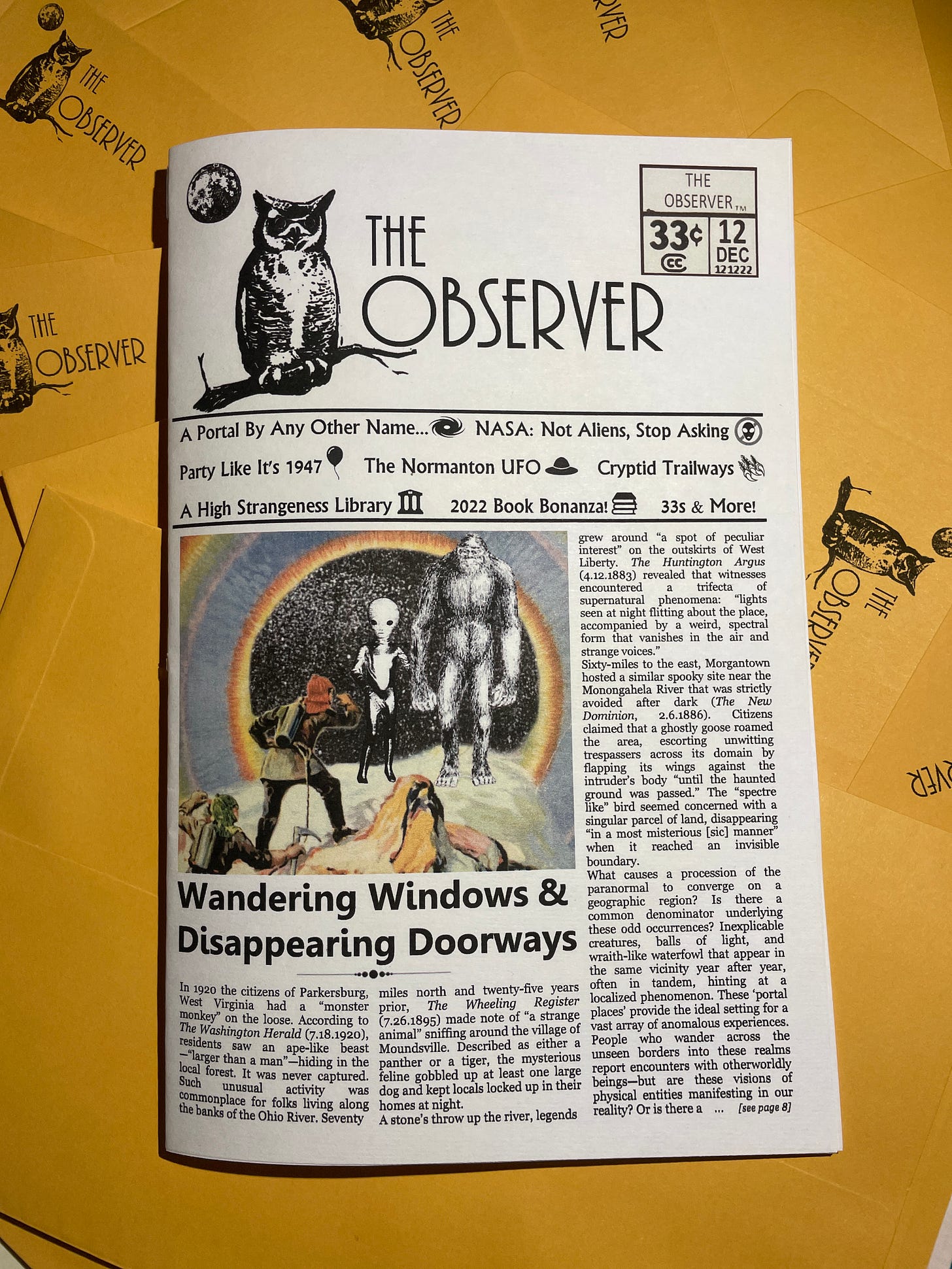Continuing our exploration of ‘portal places’ and the Fortean researchers that influenced our understanding of the phenomenon.
Part 1, Part 2, Part 4
“Every state in the United States has from two to ten ‘windows.’ These are areas where UFOs appear repeatedly year after year.” According to journalist and paranormal researcher John Keel, the world was littered with strange sections known as “window areas” where anomalous phenomena and “ambling nightmares” reproduced in droves. After years of boots-on-the-ground research and witness interviews, he was convinced that they were everywhere: “This earth is covered with windows into that other unseen world.” These tracts of land harbored unknown forces that brought forth a horde of paranormal experiences.
Evidence suggested that UFOs and monsters traveled in packs—an indication that they were catching a ride along the same interdimensional highway. In a trio of books released in quick succession between 1970 and 1971 (Operation Trojan Horse, Strange Creatures from Time and Space, Our Haunted Planet), Keel outlined his conclusions about the poorly understood form of animate energy manifesting in “the same geographical locations, century after century.” He didn’t believe that creatures filtering in through these topographical windows were flesh and blood, but rather the product of “super-high-frequency waves” that took shape in our reality by altering their vibrational frequency.
As ufologists in the 1960s took sides over the physicality of flying saucers and their pilots, so too did the nature of portals adapt to accommodate their changing attitudes. Instead of violent, swirling vortices capable of depositing visitors from another planet, window areas were places where faint emanations yielded “psychic phenomenon” in the theater of the percipient’s mind.
Those in Keel’s camp gave up on the idea that UFOs or their occupants were corporal objects—instead, they saw them as paraphysical entities. They weren’t “stable assemblages of cells and matter,” but short-lived manipulations of electromagnetic energy.
Keel suspected they were controlled by “a form of intelligent energy operating at the very highest possible point of the frequency spectrum.” Within an active window area, “ultraterrestrials” could manipulate a particle’s vibration and transmute energy into a denser form of transient matter. He believed this mechanism accounted for the fleeting consistency of cryptids, ghosts, and other unusual creatures.
Stories found across centuries of literature and oral tradition tell of paranormal activity appearing in the same places across time, gluing itself to distinct areas of the landscape. Keel believed that a motley crew of energetic manifestations—phantoms with an “uncanny habit of disappearing without a trace”—were “tied to the immediate environment” and produced through natural processes. He saw portals as “doors from their world to ours” that had been left ajar in certain geographical locations. These gateways were situated near geophysical and/or atmospheric deviations that made them ideal sites for “Unbelievable” creatures and their ultraterrestrial handlers to “ooze through holes” into our dimension.
As to why a sentient electromagnetic presence was jumping through window areas disguised as various paranormal personalities, Keel suspected “sinister and even hostile” intentions. Ephemeral elementals might be the source of ‘trickster’ legends describing supernatural beings that deliberately harass and mislead their victims. Instead of acting as our evolutionary sponsors, ultraterrestrials could be plotting to “take-over” our reality. As much as they appear to be educating or advancing humanity, they also seem just as content to confuse and “torment us.” Keel’s interpretation suggests we should do all we can to bar the doors and keep these dimensional demons at bay.
The UFO zine scene was quick to embrace his data and conclusions about the characteristics of recurrent anomalous phenomena. Ufologist Rick Hilberg commented on this shift in UFO Magazine (Summer, 1970):
“When news of these window areas was made public … many researchers (our staff included) thought that by going to these areas one would find real, solid UFO ‘bases’... All that was ever found were more UFO reports.” The lack of ‘hard’ evidence added to a growing dissatisfaction among ufologists about the concrete nature of ET visitors. Instead of alien base-camps, these paranormal hotspots became waystations for non- physical manifestations “from some other ‘place’ or reality.”
Across the pond, British ufologist Jenny Randles quickly jumped through the nearest UK ‘window’ in an attempt to validate the phenomenon. Like door-knocker John Keel, she spent much of her time investigating weird locales in person.
After untold hours of research, she admitted that many portal-places were propagated by sociological components:
“I am not convinced that these windows will let in any light,” (Northern UFOlogy, April 1981). In her experience, after supernatural activity was reported in an area, a slew of curious observers with heightened expectations made pilgrimages to the area in hopes of witnessing something strange. This results in an artificial spike in reports, which further reinforces the reputation that a location is perched near a ‘threshold to the unknown.’ On-edge residents contribute to the anxious atmosphere and become primed to uncover high strangeness in their own backyards. In places the public deems ‘haunted,’ it’s “almost impossible” to separate “fact from fiction.” (Pennine UFO Mystery, 1983).
Randles didn’t argue with the assumption that specific sites were prone to perceived paranormal activity, noting that even in the UK, “window areas are areas where UAPs manifest more often,” (Probe Report, 1982). She wasn’t convinced that the craft were coming from off-planet, however, and eventually threw her support behind the idea that mundane mechanisms were involved in their creation. She often found power stations or electrical lines in the vicinity, suggesting that electricity could be generating stray balls of light that were mistaken for flying saucers.
In later books, Randles frankly described what she felt was behind the phenomenon: “natural processes, not supernatural laws.” Encounters reported in these sacred sites were the result of “geographical or geological factors” acting upon Earth to elicit a form of luminous energy (Mind Monsters: Invaders from Inner Space, 1990). When this energy made contact with the brain’s biochemistry, it transported the observer to a hazy realm of pseudo-awareness called “monster reality.” In this state, electromagnetic forces could conjure up strange creatures and bizarre interactions that were “real” in the mind of the percipient. According to Randles, the experience was similar to “a vivid waking dream” and was a likely explanation for a vast majority of bizarre run-ins.
Yes, there’s a part 4 (and 5, etc.) coming soon!


